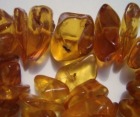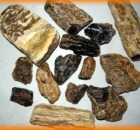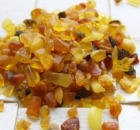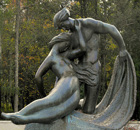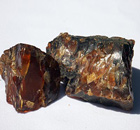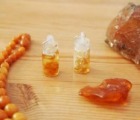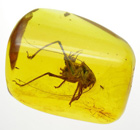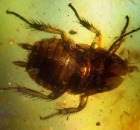




What is Baltic Amber
Kurt Vonnegut once said: “Here we are, trapped in the amber of the moment.” Perhaps he was right, because Amber has a certain mystery surrounding it. Obviously, there are different types of stones such as Baltic Amber - a beautiful fossil resin resulting from trees, with an origin dating from 50 million years ago. It is believed that this gem is the result of a Northern European pine tree that produced large amounts of resin during extremely warm climate changes. Another interesting fact beside age, history and diversity is that Baltic Amber is one of the rarest types in the Amber family. The world’s finest Amber is considered to be Baltic Amber from the Baltic Sea.
Formation of Amber
The formation of amber began millions of years ago, involving nature’s elements and climate changes. Back in prehistoric times, in a geographical zone known as Northern Europe today, sudden subtropical climate changes formed the perfect environment for the growing of conifers. Baltic amber originates from the tree resin of these conifers.
The Origin of Amber Name
The English “amber” derives from the Arabic word of “anbar”, also known as “ambar” in Medieval Latin or “ambre” in Old French, and at first described a precious type of oil derived from sperm whales, which is now known as “ambergris”. After the year 1400, it was used to describe fossil resins and it has stayed that way until the present day. Both ambergris and amber were confusing, because they would be found in the same places, washed on shores. The “ambar” word was brought by the Crusaders. The French gave a bit of help in distinguishing the two substances: ambre gris (gray amber) became ambergris and ambre jaune (yellow amber) became “amber”, the fossil resin known today.
General Facts About Amber Stones
Amber stones are mysterious gems, always alive and constantly changing, similar in a way to our human existence.
Amber Myths and Legends
Humanity has always had a soft spot for love stories, romantic tragedies and dramas.
Classification of Amber
CIBJO, which is the International Confederation of Jewelry, Diamonds, Pearls and Stones (in French, la Confederation Internationale de la Bijouterie, Joaillerie, Orfeviere des Diamantes, Perles et Pierres) recommends precious and semi-precious stone classifications. Even so, amber classification is not uniformly defined as a source material. The name of amber was previously attributed solely to the succinum acid. An example is the Baltic amber and fossilized resin products which came from the same deposits, such as gedanite, beckerite or stantienite.
Amber Properties
Amber is a fascinating semi-precious stone used in jewelry making, treatments, cures, ornaments, art and many more. Amber properties are extremely beneficial to people around the world, this being the main reason why people want to make the best of it.
Natural Inclusions in Amber
The inclusions in amber are more than just mere ordinary insects and they surely are a lot different to modern insects. Most of these ancient insects are extinct species, extremely rare and one of a kind, that make your amber stone unique. Imagine that amber inclusions also appeared in the film Jurassic Park, which is proof of how fascinating are these organic residuals and insects trapped inside.
What are Natural Amber Colors
Amber stone colors vary one from another. Contrary to common belief, the amber stones used in jewelry do not only have a natural yellowish color. Basically, amber already comes in different natural colors, and there is no need for jewelers to treat the stones artificially in order to create colorful jewelry.
Life in Amber
Amber is the result of fossilized tree resin formed through millions of years of exposure to nature’s elements and climatic changes. During prehistoric times and from the beginning of humanity, people always thought of amber as having magical powers. Perhaps amber does have magical powers, if we were to relate to all the well-preserved fossils and organic residuals found inside the resin.

